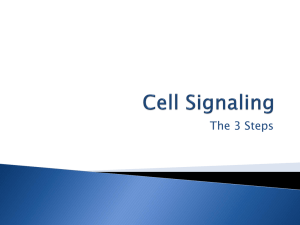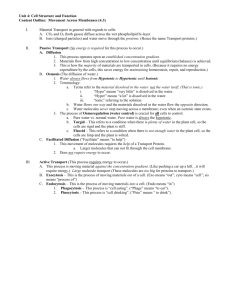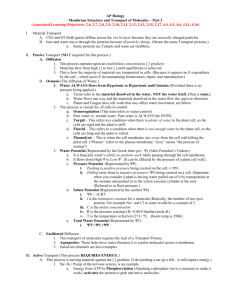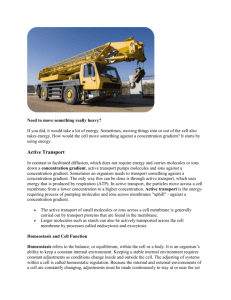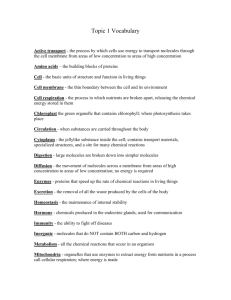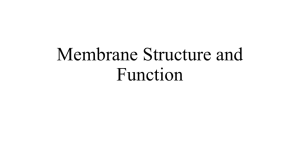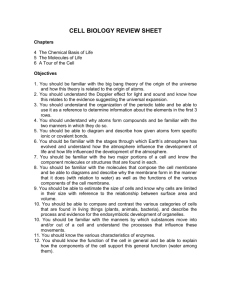BIOLOGY- Plasma membrane (DOC 89KB)
advertisement
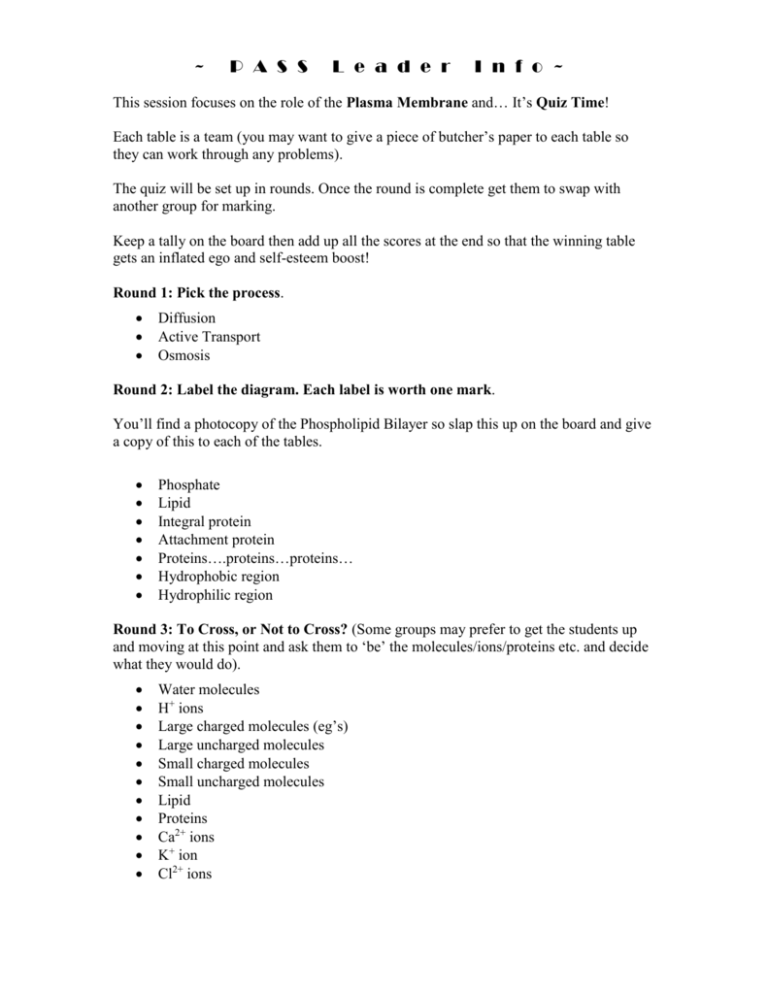
~ P A S S L e a d e r I n f o ~ This session focuses on the role of the Plasma Membrane and… It’s Quiz Time! Each table is a team (you may want to give a piece of butcher’s paper to each table so they can work through any problems). The quiz will be set up in rounds. Once the round is complete get them to swap with another group for marking. Keep a tally on the board then add up all the scores at the end so that the winning table gets an inflated ego and self-esteem boost! Round 1: Pick the process. Diffusion Active Transport Osmosis Round 2: Label the diagram. Each label is worth one mark. You’ll find a photocopy of the Phospholipid Bilayer so slap this up on the board and give a copy of this to each of the tables. Phosphate Lipid Integral protein Attachment protein Proteins….proteins…proteins… Hydrophobic region Hydrophilic region Round 3: To Cross, or Not to Cross? (Some groups may prefer to get the students up and moving at this point and ask them to ‘be’ the molecules/ions/proteins etc. and decide what they would do). Water molecules H+ ions Large charged molecules (eg’s) Large uncharged molecules Small charged molecules Small uncharged molecules Lipid Proteins Ca2+ ions K+ ion Cl2+ ions Round I 1. The spontaneous tendency of a substance to move down its concentration gradient from a more concentrated to a less concentrated area. D 2. The movement of water from high to low concentration. O 3. The movement of a substance against its concentration gradient. AT 4. The movement of a substance along its concentration gradient. D 5. The movement of a substance without the input of energy. D 6. The movement of a substance across a biological membrane against its concentration or electrochemical gradient with the help of energy input and specific transport proteins. AT 7. The movement of a substance requiring energy input. AT 8. The diffusion of water across a selectively permeable membrane. O Round II Label the diagram of a plasma membrane. There’s a great diagram of this in Campbell. Round III Give scenarios of concentration gradients OR get the students up and moving. 1. Round___ 1 2 3 4 5 6 Round___ 1 2 3 4 5 6 Round___ 1 2 3 4 5 6

